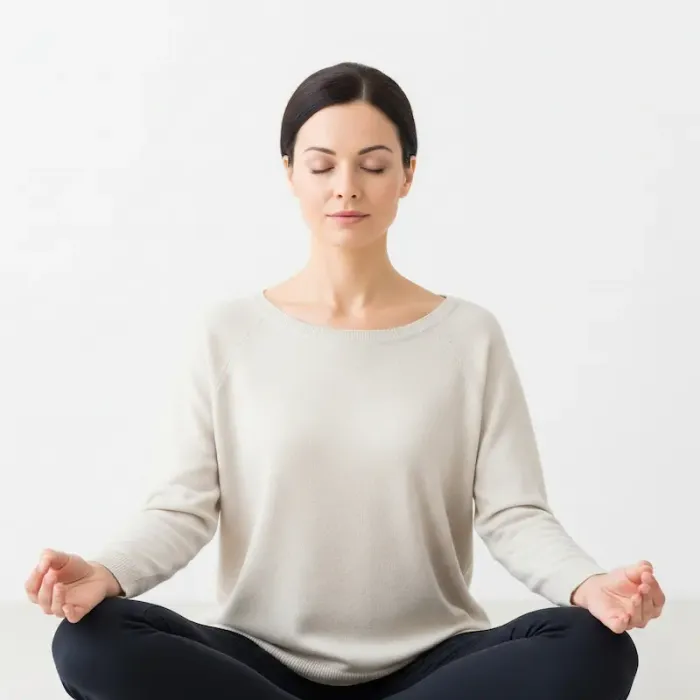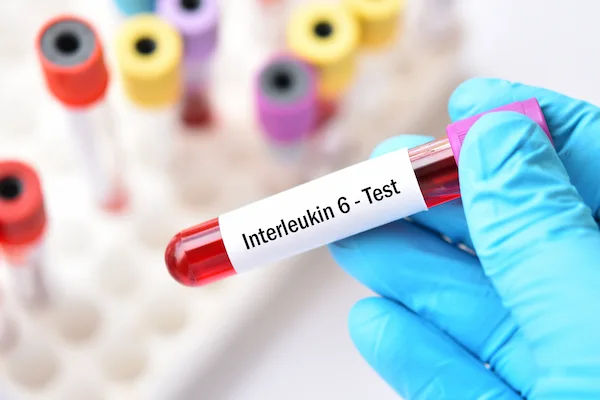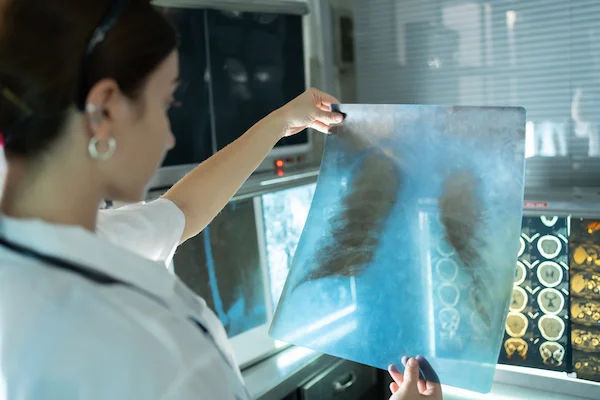Sukhasana (Easy Pose): Health Benefits and How to Practice It
Discover sukhasana yoga (Easy Pose), a comfortable meditation pose. Learn benefits, alignment tips, props, and step-by-step guidance for safe practice.

Written by Dr. Mohammed Kamran
Reviewed by Dr. Rohinipriyanka Pondugula MBBS
Last updated on 20th Nov, 2025

Introduction: Why Sukhasana Matters
If you have ever attempted meditation only to be distracted by an uncomfortable position, you are certainly not alone. The way you sit can influence the quality of your breath, your ability to focus, and even how long you can remain still. Sukhasana, known as Easy Pose, offers a simple yet effective foundation for finding physical ease and mental steadiness. This gentle cross-legged posture supports a naturally upright spine, encourages relaxed breathing, and helps create the sense of groundedness that many people seek in mindfulness practices. Whether you are completely new to yoga, returning after time away, or simply looking for a more comfortable way to meditate, sukhasana yoga provides an approachable, calming, and sustainable entry point. Its adaptability makes it suitable for a wide range of bodies, and with the right props, it can evolve into a soothing daily ritual that supports both physical comfort and emotional balance.Consult a Top General Practitioner for Personalised Advice
What Is Sukhasana (Easy Pose)?
Sukhasana is a comfortable, cross-legged sitting position that supports an upright, neutral spine. Used frequently in yoga classes for centring, pranayama, and meditation, it remains one of the most accessible seated postures. Unlike more advanced poses such as Padmasana (Lotus), Sukhasana focuses on ease, stability, and a natural sitting shape. The intention is not to force flexibility but to allow your body to settle so you can breathe, focus, and remain present.
Health Benefits of Sukhasana Yoga
While Sukhasana is gentle, practising it regularly can support general well-being—especially when paired with a balanced yoga routine, mindfulness, and good movement habits.
Potential Benefits
The most potential benefits are:
• Postural support: Encourages a tall spine and prevents hunching.
• Comfortable base for meditation: Makes sitting for longer periods more sustainable.
• Calmer breathing: Helps open the chest and allows the diaphragm to move freely.
• Gentle hip and ankle mobility: Lightly opens the hips and ankles over time.
• Stress management: Supports relaxation and emotional balance as part of a wider yoga or meditation practice.
Important Context
• Yoga poses contribute to comfort and awareness, but they are not treatments on their own.
• Sukhasana can complement routines aimed at improving back comfort, mobility, and breath awareness.
Step-by-Step: How to Practise This Meditation Pose
Step-by-step guide to practice meditation pose:
1) Prepare Your Space
• Sit on a yoga mat or folded blanket; the wall can provide support.
• Keep props nearby, such as cushions, blankets, blocks, or rolled towels.
2) Build Your Seat
• Sit on the edge of a folded blanket or cushion so your hips sit higher than your knees.
• Cross your shins comfortably, allowing your knees to widen naturally.
• Place your feet beneath the opposite knees and switch the cross of your legs during longer sessions.
3) Align Your Spine
• Root your sitting bones evenly into the support beneath you.
• Lengthen your spine from tailbone to crown, keeping the back soft rather than rigid.
• Relax your shoulders, down your back.
• Tuck the chin a little to lengthen the back of your neck and balance the head.
4) Place Your Hands
• Rest your hands comfortably on your thighs or knees, with palms either up or down.
• Close your eyes or soften your gaze.
5) Breathe
• Inhale through the nose, allowing your belly and ribcage to expand.
• Exhale slowly and fully.
• Begin with 2–5 minutes and extend up to 10–20 minutes if comfortable.
Alignment Cues to Keep You Comfortable
Helpful tips for alignment are:
• Hips above knees: Add height if your knees lift higher than your hips.
• Neutral pelvis: Avoid tipping the pelvis too far forward or back.
• Soft ribs: Prevent flaring of the lower ribs for comfortable breathing.
• Wide collarbones: Maintain an open chest without straining.
• Light lift: Gently lengthen upwards through the crown of your head.
Props and Modifications That Make Sukhasana Yoga Easier
Props and modifications for easy sukhasana yoga include:
Under Your Hips
• Use a folded blanket, bolster, or cushion to ease pressure on the hips and lower back.
Under Your Knees
• Place blocks, cushions, or rolled towels beneath your outer thighs or knees.
Against a Wall
• Sit with your back lightly touching a wall for postural support.
In a Chair
• Sit near the front edge of the chair with feet flat on the ground and maintain the same upright posture. This remains an excellent meditation position.
Alternate Legs
• Switch the cross of your legs to avoid discomfort or imbalance.
Common Mistakes (and How to Fix Them)
Common mistakes & methods to fix it include:
• Rounding the lower back: Add height or use a wall for support.
• Forcing knees down: Support them rather than pushing.
• Clenching the jaw or shoulders: Relax your tongue, soften the shoulders, and keep your breath easy.
• Numbness or tingling: Adjust your position, shift props, or stand briefly.
• Holding the breath: Maintain steady, relaxed breathing.
How Long and How Often Should You Practise?
The length and frequency of practice include:
• Beginners: Start with 2–5 minutes daily.
• Progression: Increase gradually to 10–20 minutes, switching leg positions or adding props as needed.
• Consistency: Short daily practice is more beneficial than occasional longer sessions.
Breathing and Focus Techniques for This Meditation Pose
Breathing and focus techniques include:
1. Box Breath (4–4–4–4)
• Inhale 4, hold 4, exhale 4, hold 4. Continue for 1–3 minutes.
2. Extended Exhale
• Inhale 4, exhale 6–8 for relaxation.
3. Counting Breaths
• Count each exhale from 1 to 10, then repeat.
Who Should Be Cautious or Modify?
Be cautious in the following situations:
• Knee, hip, or ankle concerns: Use extra height and knee support, or choose a chair.
• Low back or sciatic discomfort: Sit higher, use the wall, or modify the pose.
• Circulation or nerve issues: Avoid long periods in one position.
• Pregnancy: Add support or choose a chair; seek personalised guidance if needed.
If you have an injury or ongoing condition, consult a professional before changing your routine.
Tips to Build a Sustainable Sukhasana Yoga Habit
The tips to build a sustainable sukhasna yoga habit are:
• Pair it with daily rituals such as morning tea or bedtime.
• Warm up briefly with gentle movements before sitting.
• Use a soft timer to avoid checking the clock.
• Be willing to modify or use a chair when needed.
Variations and Complementary Poses
Some variations and complementary poses are:
Variations
• Easy Sitting on a cushion
• Supported Sukhasana with props under the knees
• Sukhasana with a block between the feet
• Chair Meditation Pose
Complementary Poses
• Staff Pose (Dandasana)
• Bound Angle Pose (Baddha Konasana)
• Supine Figure-Four
• Cat–Cow
• Sphinx Pose
• Child’s Pose
Sukhasana vs Other Seated Meditation Poses
Find below the comparison of sukhasna and other meditation poses:
• Sukhasana: Comfortable and accessible, ideal for most practitioners.
• Siddhasana: A structured seated pose that may suit those with more flexibility.
• Padmasana: Advanced; not required for effective meditation.
The best meditation pose is the one that supports steady breath and mindful attention without pain.
When to Seek Guidance?
Seek guidance when:
• Persistent knee, hip, or back pain during or after sitting
• Ongoing numbness or tingling in the legs
• Need for pregnancy-friendly modifications
• Desire for personalised posture, mobility, and strengthening advice
Conclusion
Sukhasana remains one of the most accessible and grounding postures for meditation and breathwork. Its simplicity encourages comfort, steadiness, and natural ease, making it suitable for beginners and experienced practitioners alike. With thoughtful alignment, supportive props, and consistent practice, Sukhasana can help calm the mind, improve posture, and deepen your connection to breath. Whether you meditate for a few minutes or a full session, this gentle pose offers a reliable foundation for mindfulness and daily well-being.Consult a Top General Practitioner for Personalised Advice
Consult a Top General Practitioner for Personalised Advice

Dr. Suvadeep Sen
Critical Care Specialist
12 Years • MBBS, MD, FNB (CRITICAL CARE MEDICINE), EDIC
Mumbai
Apollo Hospitals CBD Belapur, Mumbai

Dr. B Rachana
General Physician/ Internal Medicine Specialist
8 Years • MBBS, Fellowship in Diabetes, Fellowship in Applied Nutrition,CCEBDM(Diabetes)
Bengaluru
Apollo Clinic, JP nagar, Bengaluru

Dr. Praveen Kumar Mukka
General Physician/ Internal Medicine Specialist
21 Years • MBBS, MD General Medicine
Hyderabad
Apollo 24|7 Clinic - Telangana, Hyderabad
(75+ Patients)

Dr. Mainak Baksi
General Practitioner
13 Years • MBBS , MD (MPH)
Howrah
Mainak Baksi Clinic, Howrah
(50+ Patients)

Dr. Rajib Ghose
General Physician/ Internal Medicine Specialist
25 Years • MBBS
East Midnapore
VIVEKANANDA SEBA SADAN, East Midnapore
Consult a Top General Practitioner for Personalised Advice

Dr. Suvadeep Sen
Critical Care Specialist
12 Years • MBBS, MD, FNB (CRITICAL CARE MEDICINE), EDIC
Mumbai
Apollo Hospitals CBD Belapur, Mumbai

Dr. B Rachana
General Physician/ Internal Medicine Specialist
8 Years • MBBS, Fellowship in Diabetes, Fellowship in Applied Nutrition,CCEBDM(Diabetes)
Bengaluru
Apollo Clinic, JP nagar, Bengaluru

Dr. Praveen Kumar Mukka
General Physician/ Internal Medicine Specialist
21 Years • MBBS, MD General Medicine
Hyderabad
Apollo 24|7 Clinic - Telangana, Hyderabad
(75+ Patients)

Dr. Mainak Baksi
General Practitioner
13 Years • MBBS , MD (MPH)
Howrah
Mainak Baksi Clinic, Howrah
(50+ Patients)

Dr. Rajib Ghose
General Physician/ Internal Medicine Specialist
25 Years • MBBS
East Midnapore
VIVEKANANDA SEBA SADAN, East Midnapore
More articles from General Medical Consultation
Frequently Asked Questions
1) Is Sukhasana okay for beginners?
Yes. Sukhasana is one of the most accessible seated poses because it focuses on comfort rather than flexibility. Beginners can benefit greatly from using props such as cushions, folded blankets, or yoga blocks under the knees to reduce strain. Many people also find it helpful to switch the cross of the legs during longer sessions to maintain balance in the hips.
2) What if my knees are higher than my hips?
If your knees lift higher than your hips, it usually indicates tight hips or insufficient elevation under the pelvis. Adding extra height under your sitting bones helps your pelvis tilt forward slightly, which supports a more neutral spine. You can also place blocks or cushions beneath your knees for added comfort. This prevents pulling sensations in the hips and reduces tension in the lower back.
3) Can this pose help with back pain?
Sukhasana alone is not a treatment for back pain, but it can be part of a supportive routine that encourages better posture, calm breathing, and body awareness. When combined with gentle strengthening and stretching, it may help some individuals sit more comfortably. If sitting on the floor increases your discomfort, try using a more comfortable seat or choose a supportive chair.
4)How long should I meditate in this pose?
Beginners can start with 2–5 minutes and gradually build to 10–20 minutes as comfort improves. The key is maintaining ease in the spine, legs, and breath. If numbness, tingling, or sharp discomfort appear, adjust your position, add props, or briefly stand and walk before returning.
5) Do I need Lotus Pose to meditate?
No. Lotus Pose is not required for meditation and is inaccessible for many people due to hip, knee, or ankle limitations. Sukhasana, a chair, or any seated position that supports relaxed breathing and steady awareness can be equally effective.




